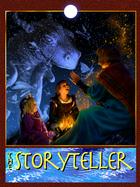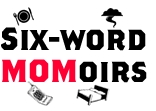Just about a year ago, Michael Margolis, Madelyn Blair, and Karen Dietz of the WorkingStories group surveyed member story practitioners to compile a collective picture of organizational and applied storytelling worldwide.
Although the results have yet to be formally analyzed, Michael has given me permission to share a preliminary snapshot here.
The survey’s purpose was to ask…
-
• What is the evolving state of the field (of applied/organizational storytelling)?
-
• Where do we each come from, and what do we share in common?
-
• What issues/challenges might we want to organize around?
One-hundred-fifteen respondents from 10 countries around the world (Australia, Canada, Denmark, India, Israel, Netherlands, New Zealand, Switzerland, United States, and United Kingdom) completed the survey.
Most (57 percent) respondents are independent solo practitioners, with 24 percent claiming 2-10 employees, 6 percent with 11-50 employees, and 12.5 percent with larger enterprises of 100+ staff.
Key highlights from the quantitative portion of the survey:
Story practitioners prefer to describe themselves in their own words. When asked what best described your professional affiliation, the “other” category was filled to overflowing. Throughout the survey, a consistent ~ 20 percent expressed their ideas by using the “other” category.
Story is most often at the core of respondents’ work. 45 percent use story as a core tool or technique. 30% use story as a support tool or technique, and 21 percent use story as an organizing principle.
While still an emerging field, a body of core practitioners is established. Of survey respondents, 56 percent of story practitioners have been in business for 10 or more years, and 48 percent have used story in their practice for more than 10 years.
Services are delivered and packaged in a range of formats. 74 percent provide workshops/training, 68 percent are professional speakers, 66 percent deliver consulting, 59 percent facilitate, 57 percent write, and 53 percent serve as coaches.
Culture is the most frequently mentioned application of story work. 68 percent apply story in culture work. This was followed by 55 percent applying story to training and 53 percent to change management. Conflict resolution, education, leadership development, and organizational development each came in respectively at 48 percent.
Story practitioners see results from their use of story. 74 percent reported that the results of their story work were “clarity and focus” and “strengthened relationships.” 63 percent reported that a sense of unity was another derivative effect.
Knowledge sharing and collaboration head the activities that would motivate respondents to join and actively participate in an association focused on organizational storytelling showed (reported are the responses for “really motivates me” and “somewhat motivates me”):
Collaborating and sharing knowledge: 91 percent
Being part of a community: 84 percent
Gaining credibility/legitimacy for the field: 73 percent
Accessing forums/conferences/convenings: 72 percent
Finding new business: 71 percent
Sponsoring group research: 42 percent










